Our research focus is on embodying, and integrating together, the range of capabilities necessary for human(-like) intelligence within the Sigma (∑) graphical cognitive architecture. We are looking to subsume many of the capabilities found in the current generation of state-of-the-art architectures – such as Soar and ACT-R – as well as to go significantly beyond them. Yet, the goal is also to accomplish this in a simpler and more elegant fashion – when possible with the capabilities arising from combinations of preexisting architectural mechanisms and knowledge rather than building new mechanisms – and with adequate efficiency. We are still in the basic research stage, exploring and understanding the implementation and integration of a wide range of capabilities. The intent though is to begin experimentation with Sigma in virtual humans within the next few years.
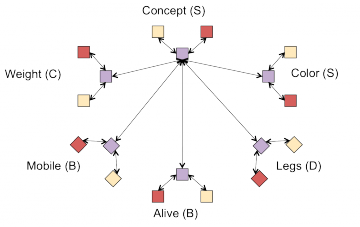
Figure 1: Schematic structure of semantic (concept) memory, with symbolic (S), Boolean (B), discrete (D) and continuous (C) features.
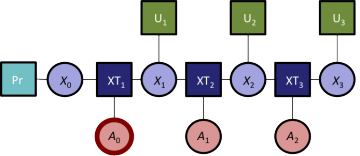
Figure 2: Partially observable Markov decision process (POMDP) for choosing the next action (A0) based on distributions over locations (X), actions (A), and utilities (U), plus transition functions (XT).
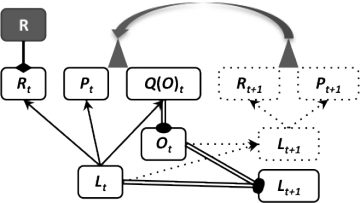
Figure 3: Variables and processes in reinforcement learning.
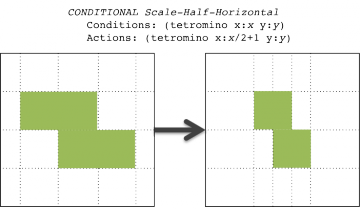
Figure 4: Scaling Z tetromino horizontally, by half, in place.
Research to date on Sigma can be broken up into the following areas:
Memory
Long-term, working memories and perceptual buffers based on graphical models, along with demonstrations of a range of flavors, such as a procedural rule-based memory, declarative semantic (fact/concept) and episodic (history) memories, a constraint memory, a decision-theoretic (POMDP) memory, a memory for continuous mental imagery, a memory for models of actions, and a memory for what has been perceived.
Problem solving
Problem space search with impasse-driven reflection (as in Soar), decision-theoretic choice (via POMDPs), and Theory of Mind (as in PsychSim) [Jointly with David Pynadath and Stacy Marsella].
Learning
All learning in Sigma is mediated at present by gradient descent over the functions that exist in particular factor nodes of the graphical models. When combined with the appropriate knowledge on top of the architecture, this has shown the ability to acquire the kinds of naïve Bayes classifiers that are the basis for semantic memory, episodic learning – including deconstructing the notion of base level activation as the temporal prior learned for this memory – the learning of actions, maps (as part of SLAM) and perceptions, reinforcement learning, and inverse reinforcement learning.
Mental imagery
Translation, scaling and rotation (by multiples of 90˚) of continuous 2D imagery.
Perception
Object recognition from features (via a CRF), edge detection (via image translation and inversion), and localization (via part of SLAM).
Natural language
Word sense disambiguation, part of speech tagging, parsing, and statistical question answering.
Speech
Small vocabulary isolated word recognition, including automated learning of the requisite parameters, and connected word recognition.
Simple Tasks
Games (Eight Puzzle and Tetris [partial]), 1D corridor navigation, question answering, concept formation, and other smaller task fragments.
Virtual Humans
A replication of the mind of INOTS – a training vehicle for junior leaders in the U.S. Navy in interpersonal communication skills – via a naive Bayes sentence classifier and a deliberative discourse manager. A pair of virtual humans embodied via SmartBody that combine simple rule-based behavior with SLAM and multi-agent reinforcement learning to emulate a shoplifter and a security agent in a convenience store scenario.

Figure 5: Virtual human in a convenience store.
Optimization
Techniques that have been investigated include reusing messages across decisions, reducing the number of messages that must be sent within a decision by queue ordering, and shifting to a sparse representation of piecewise-linear functions.
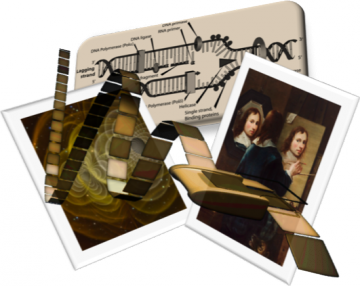 In addition to the work on the Sigma architecture, the cognitive architecture group has been actively pursuing work on the following topic(s):
In addition to the work on the Sigma architecture, the cognitive architecture group has been actively pursuing work on the following topic(s):
Computing as the Fourth Great Scientific Domain
This work focuses on two broad themes about computing: (1) that it amounts to what can be termed a great scientific domain, on a par with the physical, life and social sciences; and (2) that much about its structure, content, richness and potential can be understood in terms of its multidisciplinary relationships with these other great domains (and itself). The intent is to advance a new way of thinking about computing and its nature as a scientific discipline, while broadening our perspectives on what computing is and what it can become.


